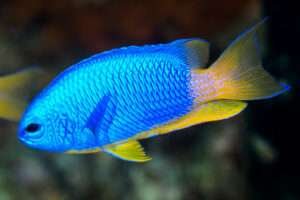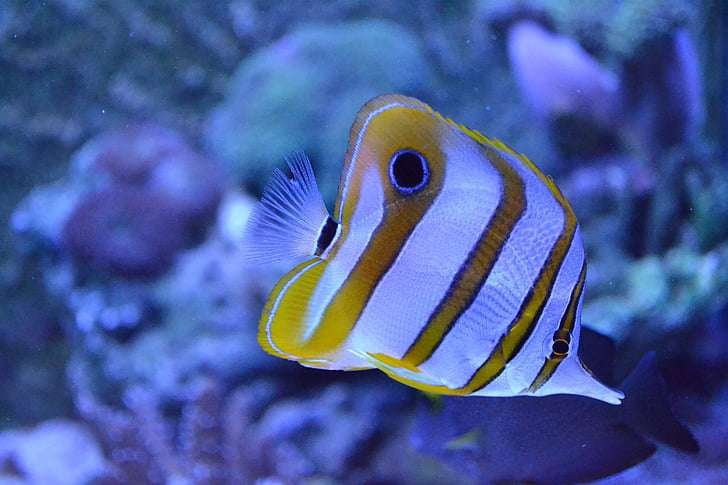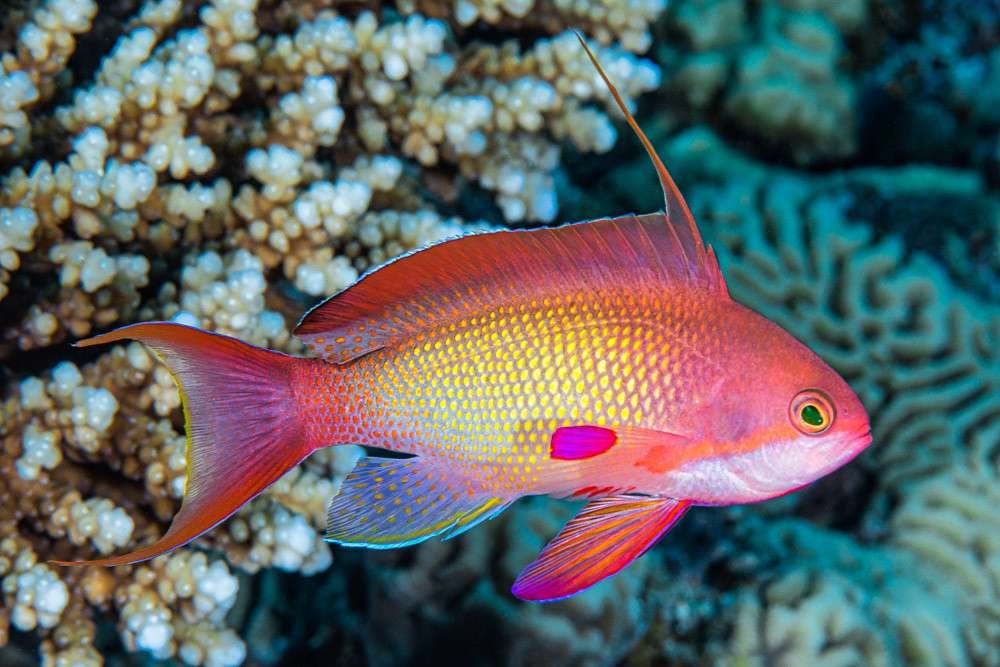Damsels Fish

Marine keepers can find some of the most vibrant, plentiful, affordable, and resilient fish by keeping damselfish. They live in tropical oceans worldwide and are frequently found in coral reefs from Indonesia and other regions, ranging from the Red Sea to the Barrier Reef, the Atlantic to the Indian and Pacific Oceans, and beyond. They are a common sight for tourists and are frequently included in videos on underwater animals because of their brilliant colors and abundance.
These fish require certain conditions to survive. For the majority of damselfish, this entails hostility and territoriality as they create and defend their own algae-feeding patch. For example, chromis feed on zooplankton in open water and shoal in great numbers to seek protection under staghorn corals. Clownfish, a subspecies of damselfish fish, defend their home territories by using the stinging cells of sea anemones as a line of defense against intruders.
Because of their omnivorous diet and resilience, damselfish are simple to feed. They are a popular option for newly constructed saltwater aquariums because of their ability to withstand less-than-ideal water quality. However, because they may harass or even kill other marine fish, their territorial tendency can cause problems in tanks. Certain speciesᅳlike humbugs and domino damselfish, for exampleᅳare more likely to exhibit this behavior than others and are frequently brought back to the store after a few months.
Blue damsels take dominance swiftly in aquariums, frequently dwindling their own numbers to one or two fish. When males and females are introduced, a couple may form that will aggressively eradicate other fish of the same sort and keep other fish from accessing certain regions of the tank, which could have long-term effects.
Chrysiptera cyanea is one of the most aggressive species of blue damselfish; however, Allen’s damsels (Pomacentrus alleni) and Yellowtail damselfish (Chrysiptera parasema) are less aggressive, however they still frequently display hostile behavior. It is advised to retain only one blue damselfish per tank in order to reduce problems.
Suggested species of damselfish
The Chromis is the lone exception to the damselfish rule. These fish are calm, reef-safe, and open-water plankton feeders. On the substrate, they spawn infrequently. Green Chromis are affordable and commonly accessible. A few species are better suited, even though your initial fish choice may be more exotic and colorful. When they are housed in groups of ten or more, their subdued blue/green coloring becomes vivid. A group of Anthias, Green Chromis, and a Yellow Tang may make for an amazing visual display in a big reef tank.
Selfish tank arrangement
A single Yellowtail blue damsel is adequate for tanks with a volume of 170 gallons and a length of about two feet. To allow them to swim up and down, a group of five or more Green Chromis needs a tank that is three feet long and 250 liters in capacity. Reef tanks and fish-only tanks are suitable for keeping damselfish, who will mix with any aquarium fish that isn’t big enough to consume them. But do not combine little, nano-sized gobies with aggressive species.
Because tough species can more than hold their own with larger tankmates, they can even be mixed in with pufferfish, triggerfish, and huge angelfish.A damselfish tank can be a fully functional hard coral reef system, or it can be as basic as a tropical tank that has been converted to saltwater. It is well known to be incredibly hardy and tolerant to bad water quality, although this should never be tested. Prior to testing the water on a regular basis using the standard protocol, the tank should be matured using beneficial microorganisms. Reactors, UV sterilizers, and protein skimmers will all aid in cleaning the water and creating a more stable saltwater tank.


